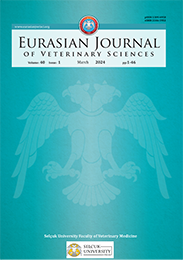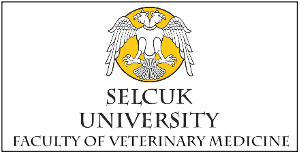| 2011, Cilt 27, Sayı 2, Sayfa(lar) 123-126 | |
| [ Özet ] [ PDF ] [ Benzer Makaleler ] [ Yazara E-Posta ] [ Editöre E-Posta ] | |
| Prevalence of cryptosporidiosis in calves with diarrhea | |
| Özlem Derinbay Ekici1, Ferda Sevinç1, Alparslan Coşkun2, Nermin Işık1, Mutlu Sevinç2 | |
| 1Selçuk Üniversitesi, Veteriner Fakültesi, Parazitoloji Anabilim Dalı, Konya, Türkiye 2Selçuk Üniversitesi, Veteriner Fakültesi, İç Hastalıkları Anabilim Dalı, Konya, Türkiye |
|
| Keywords: Calveswith diarrhea, Cryptosporidium spp. | |
| Abstract | |
Aim: This study was carried out to determine the prevalence of Cryptosporidium sp. in calves with diarrhea in University of Selcuk, Department of Parasitology between 2005 and 2009. Materials and Methods: Faecal samples were collected from 1-35 days old 368 calves. Faecal samples were stained with Modified Ziehl-Neelsen staining technique, they were examined under light microscope for the presence of Cryptosporidium sp. oocysts. Results: Out of 368 faecal samples, 145 (39.4%) were found to be infected with Cryptosporidium sp. oocysts. Cryptosporidium sp. oocysts were seen in 1-10 days age calves at the highest level (46%) and 11-20 days age at the lowestlevel (31%). Conclusion: C. parvum should be considered in the treatment of diarrhea in neonatal calves. |
|
| [ Başa Dön ] [ Özet ] [ PDF ] [ Benzer Makaleler ] [ Yazara E-Posta ] [ Editöre E-Posta ] | |




